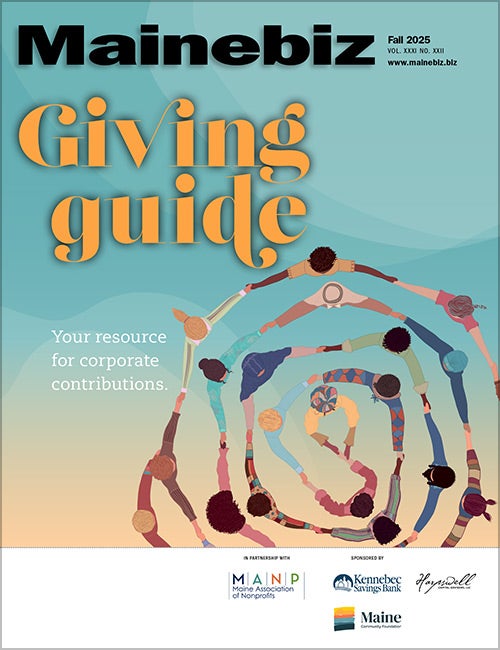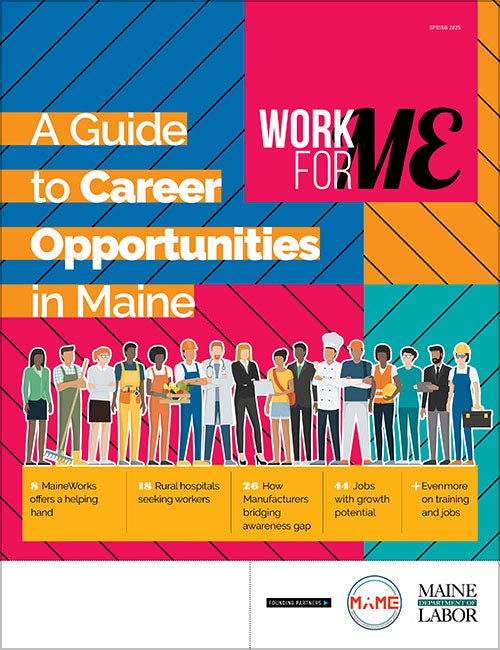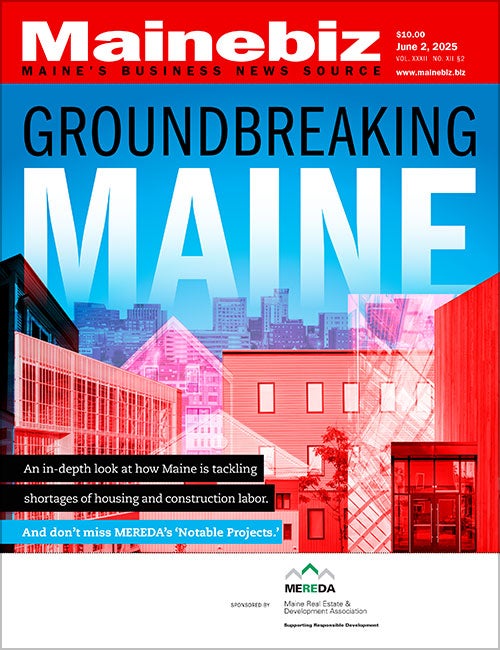Raising pain: Nonprofit fundraising suffers in recession | An overcrowded nonprofit sector in Maine faces the added challenge of fundraising in a recession
It’s the end of the work day, but Ari Solotoff, executive director of the Portland Symphony Orchestra, isn’t heading home. Instead, he’s going to meet with one of the symphony’s many private donors who help sustain Maine’s largest performing arts group.
Staying in touch with current, past and prospective donors is part of any nonprofit executive’s job description, but Solotoff says it’s a part of the job he’s refocused attention on since the economic downturn hit this fall. With the recession dampening philanthropic giving, Solotoff says cementing relationships and reiterating to donors how much their generosity means to the symphony is as important as ever. “We’re definitely impacted like many institutions are,” Solotoff says. “We’re a reflection of the community.”
While average Mainers scrutinize their finances in the face of rising costs and shrinking investments, nonprofits across the state are also bracing for a rocky fundraising ride ahead in a sector many say was already too crowded.
“We’ve certainly tightened the screws down and tightened our hiring just to ride it out,” says Alan Caron, CEO of Yarmouth-based nonprofit GrowSmart Maine. Caron reduced projections for the organization’s year-end appeal from $200,000, which it raised in last year’s campaign, to $100,000. Caron says his organization, like most in the state, won’t know the true effect of the economic downturn until it wraps up its annual year-end fundraising campaigns, which most nonprofits rely on for a large chunk of their operating budgets.
Scott Schnapp, executive director of the Maine Association of Nonprofits, says nonprofits should be proactive. They should already be reevaluating their business model and diversifying funding sources in anticipation of a tough year ahead. The ones that aren’t, he warns, will be in for a surprise when they don’t have the resources they were expecting. “Organizations are going to have to make pretty significant adjustments based on the reality of the external market,” Schnapp says. “Well-run organizations should have been assessing the realities of a softening market and really looking at how they can meet their mission-related goals in the most efficient way.”
The cost of not adapting to a harsher fundraising environment is clear, says Caron. “The bigger institutions that can’t move quickly — the GMs of the nonprofit world — are going to have more trouble,” he says. “We’re going to lose some organizations over the next year.”
The nonprofits’ impact
In 2005, Maine’s nonprofit sector — or, more accurately, the 2,667 charitable nonprofit organizations that reported more than $25,000 in gross receipts that year — contributed $7 billion to Maine’s economy through wages, retail and wholesale sales, and contracted professional services, according to MANP. That’s 15% of the state’s gross product, equal to construction and manufacturing’s shares combined. But those numbers don’t explain the whole story. Maine’s nonprofits have a qualitative impact on the state and its economy that extends beyond the GDP influence. When the Brookings Institution released its report on the state’s economy in 2006, it named Maine’s brand and quality of life as two of its major assets. Organizations like land trusts, community development agencies, museums and downtown revitalization groups all contribute to the Maine economy and quality of life here, says Scott Dickerson, executive director of the Coastal Mountains Land Trust in Camden. “A lot of those values are supported by nonprofits,” Dickerson says.
Maine’s nonprofit sector has grown substantially over the past several years. But Maine is a relatively small, rural state and lacks the corporate and philanthropic resources to support such a robust nonprofit sector, says Schnapp. “So the market, so to speak, was already beginning to be saturated,” he says. “The ability to support the growth in the sector was already beginning to soften before the really challenging financial stuff hit in September.”
On one hand, that means many nonprofits are already operating lean and may have to make more significant cuts in programs and services if funding does go through the floor. On the other hand, it means some nonprofits are ahead of the curve in diversifying funding sources and developing more entrepreneurial business models.
Schnapp says the subsector of Maine’s nonprofits that will be hit hardest by the recession are the human services organizations — those that provide, for example, hot meals to the less fortunate, housing for the homeless and rides to the grocery store or doctor’s office for the elderly. Schnapp says these organizations often rely on dwindling state and federal money and are now facing even more significant cutbacks, which will pressure their service models and programs. “The impacts of these cuts aren’t really clear from a societal standpoint,” Schnapp says. “But it’s very clear the resources they have to manage their program will continue to go down.”
Julie Shackley, CEO of Lewiston-based Androscoggin Home Care & Hospice, believes she knows exactly what the impact will be if organizations like hers, which employs 450 and served over 8,000 patients and families last year, are forced to cut services because of continued funding cuts. Shackley says human services nonprofits — which make up 33% of the 2,667 reporting nonprofits in the state — act as the safety net for society. If nonprofits are forced to cut programs and services, that safety net catches fewer people. “If we’re not able to see those in need, where are they going to get their care?” Shackley asks. “The ERs, jails, which add further costs and burden to the state.”
Decreasing funding has already claimed some victims. Shackley serves on the board of directors of The Jason Program, a small nonprofit that cares for critically ill children in Portland. The organization’s board recently decided to close the nonprofit because it lost a significant grant due to the faltering economy. “It’s a wonderful organization, but in the time that we live we survived on foundations and grants,” Shackley says. “When one large foundation pulled out, which it did because of the economy, we were unable to find other funds to offset that.”
Getting creative
The Center on Philanthropy at Indiana University confirms what Maine’s nonprofit employees know from experience — that recessions mean fewer donations. The center found that individual charitable giving, after adjusting for inflation, fell an average of one percent during a recession year and an average of 2.7% during years with at least eight months of recession.
Economic recessions have been shown to spur drops in corporate giving, but there are bright spots in that arena. The Committee Encouraging Corporate Philanthropy in June released a survey of 155 CEOs that projected corporate giving would remain steady in 2008 despite an anticipated earnings slowdown. In addition, 89% of CEOs polled said companies should have mechanisms in place — cash reserves or endowed foundations — to sustain contributions during periods of weak financial performance.
Janet Wyper, community relations manager at L.L.Bean in Freeport, receives roughly 230 phone calls, emails and letters a week from organizations looking for donations. She says that number has increased significantly over the last several months. Wyper also has noticed a difference in the tone of the requests, especially among the smaller, community-based organizations. Whereas before they were seeking donations to fund a specific mission or long-term project, Wyper says now they are more often asking for help just to cover operating costs. “Some are just stopping short of saying they desperately need the help,” Wyper says.
L.L.Bean, which doled out $2.6 million last year, is at the moment holding steady with 2008 charitable contributions, Wyper says, but she warns the future is uncertain. “L.L.Bean, like all other retailers, is being impacted by the economy and we’ll have to wait and see how next year turns out,” she says. “Right now economic indicators are telling us it’s going to be a really tough year.”
Demonstrating the optimism that fundraisers often have, Marc Pitman, director of Inland Hospital’s foundation in Waterville and founder of FundraisingCoach.com, says economic downturns can actually be good for nonprofit organizations. When times are good, he says, organizations are often victim to mission creep, or expanding programs or services beyond the original intention of the organization. Downturns can force nonprofit boards to reevaluate their organization’s strategic plan, shed nonessential programs and recommit to the organization’s original purpose. “It’s not without pain because they may need to shed some things that are real needs, but it can also be revitalizing too for an organization,” Pitman says. “For organizations that weather this, they’re going to be so much stronger, so much leaner and much more focused when the economy swings back the other way, as it invariably does.”
Some organizations are using the economic downturn as an opportunity to stretch their entrepreneurial chops. GrowSmart Maine has always donated its time and resources to assist Maine towns with planning and consulting services, but Caron says that doesn’t make financial sense anymore. Once the organization wraps up a big project it’s currently doing pro bono for Standish, GrowSmart will begin charging for its consulting services.
“We can’t afford to give that service away,” Caron says. “We have to be creative right now and very entrepreneurial.”
Solotoff agrees. He says the increased scrutiny that he, his staff, the board and musicians themselves have placed on the Portland symphony’s budget and operation has created a great learning environment.
But looking forward, if 2009 is as bad a year as some predict, Solotoff will have to do what many nonprofit leaders face — cut programs and services. “As responsible stewards of this organization, that has to be in the mix,” Solotoff says.
Whit Richardson, Mainebiz staff writer, can be reached at wrichardson@mainebiz.biz.










Comments